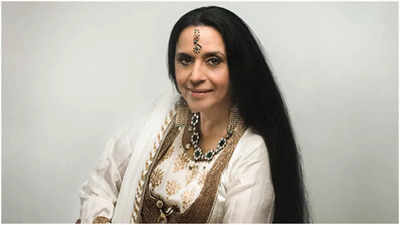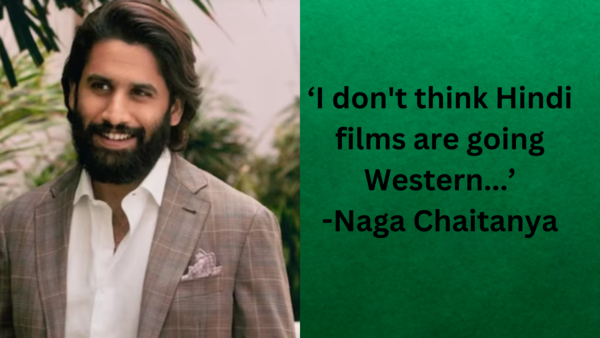As we enter 2025, the buzz surrounding Indian cinema highlights an undeniable shift in audience preferences, particularly in North India. While pan-India films like Pushpa 2 have created waves and rejuvenated single-screen theaters, the subsequent performance of releases like Varun Dhawan’s Baby John has tempered hopes of a sustained revival. The upcoming slate of films for January and beyond does little to spark optimism, leaving single-screen owners bracing for a quiet season.
Pushpa: The Torchbearer of Mass Appeal
The resounding success of Pushpa in single screens showcased the potential of well-crafted masala entertainers to bring back the fervor of the cinema-going experience. Allu Arjun’s magnetic portrayal and Sukumar’s engaging storytelling drew audiences in droves, rekindling the magic of big-screen entertainment. The whistles, cheers, and claps synonymous with single screens painted a promising picture, as audiences—particularly from small towns and tier-2 cities—flocked to theaters. However, this resurgence seems short-lived.
Baby John: A Missed Opportunity
Varun Dhawan’s Baby John was poised as a successor to the mass-market phenomenon created by Pushpa. With its premise rooted in action and melodrama, the film’s intent was clear: to woo audiences who revel in larger-than-life storytelling. Unfortunately, it fell short of expectations. Critics panned the film for its lackluster execution, uneven screenplay, and absence of memorable moments. Consequently, the film’s underwhelming box office performance failed to provide the momentum that single screens desperately needed after the highs of Pushpa. The tepid response was a stark reminder that formulaic approaches cannot replace innovative content and compelling performances. In fact, the Malayalam film Marco which is getting a lot of appreciation for its gore, has benefited a lot from Baby John’s poor run.
January’s Dry Spell
January 2025 offers little solace to single-screen exhibitors in North India. The films lined up for release lack the star power or narrative appeal required to draw crowds back to cinemas. None of the upcoming titles have generated substantial pre-release buzz, leaving exhibitors concerned about footfalls.
Sonu Sood’s Fateh
Sonu Sood’s Fateh aims to capitalize on his real-life popularity as a messiah for the masses. The film is positioned as an inspirational action drama, a genre that resonates well in smaller towns. However, the marketing has been subdued, and the absence of a high-octane trailer has muted excitement. While Sood’s goodwill may draw some audiences, the lack of a compelling hook limits the film’s potential to sustain interest beyond the opening weekend.
Kangana Ranaut’s Emergency
Kangana Ranaut’s Emergency, a political drama revolving around a pivotal era in India’s history, promises to be a performance-driven narrative. While Kangana’s talent as an actor is undeniable, her films have struggled to find mass acceptance in recent years. Political dramas traditionally attract niche audiences, and Emergency seems unlikely to fill single screens in North India, where audiences often favor escapist entertainment over heavy, issue-driven content.
Ram Charan’s Game Changer
Ram Charan’s Game Changer carries the pan-India tag, but its appeal in North Indian single screens remains uncertain. While Charan’s previous outing, RRR, was a colossal success, the film had the backing of SS Rajamouli’s vision and a unique historical premise. Game Changer, directed by Shankar, lacks a similar universal theme, and its promotional material has yet to create a frenzy. If marketed effectively, it might pull audiences in urban multiplexes, but its impact on single screens could be limited.
Amaan Devgn’s Azaad
The debut of Amaan Devgn, nephew of Ajay Devgn and Rasha Thadani- daughter of Raveena Tandon and Anil Thadani, is one of the few films generating curiosity, primarily due to the star kid’s lineage. Azaad, touted as a patriotic drama, seems tailored for single screens. However, newcomers often struggle to shoulder a film’s burden entirely, and unless the narrative and execution are exceptional.
Akshay Kumar’s Sky Force
Sky Force is set against the backdrop of the India-Pakistan war of 1965, and highlights courage and patriotism. Directed by Sandeep Kewlani and Abhishek Kapur, this action-packed drama stars Akshay Kumar alongside Nimrat Kaur.
Shahid Kapoor’s Deva
Deva features Shahid Kapoor in a high-octane action-drama about vengeance and justice. Directed by Rosshan Andrews, it is about a brilliant yet rebellious cop who uncovers a web of deceit and betrayal while investigating a high profile case.
Talking about the revival of single screens, Raj Bansal says, “Single screens got revived with the success of Pushpa 2. So basically, the revival of single screens solely depends on action films, as masses prefer to watch them here and tickets are also priced. low, while for family and niche films they prefer going to multiplexes, Shahid Kapoor’s film looks interesting as it is quite action oriented. the flavor of patriotism but unfortunately in recent times, his films hasn’t worked so one will have to wait and watch. If it clicks, then it can do wonders.
On the other hand, Exhibitor Vishek Chauhan asks a very pertinent question. He asks ‘Who is a single screen audience?’ and states, “There is a theatrical audience and there is a non theatrical audience.And single screen cinemas,revival, survival, et cetera, is not the point. The point is the exhibition sector.I don’t see any differentiation between single screen, multiplexes, et cetera.This is a narrative built by the multiplexes to differentiate themselves from the larger exhibition sector.The question that begs is that if multiplexes are doing so well, why is it that PVR Inox, our largest operator in this country has incurred 321 crore loss for the last three quarters in this calendar year. So single screens are dying and bleeding, but so is something like a PVR Inox.”
He added, “I know 50 single screens in this country, it simply means that it is just a narrative that single screens are dying, single screens need to be revived etc etc. Everyone is making money on Pushpa, right from the single screen owners to multiplexes. Last year, we had a film called Gadar, where cinemas that were closed for the last six months were opened up and exhibitors were sharing images of 1000 people sitting in the halls and 2000 waiting outside.So at the end it is the content that works. . Till a point content was specifically designed by Bollywood to suit the multiplexes. It was the elitist cinema that was being dissected out that made multiplexes look so good. They used to say that 70% of the revenue we generate is from Bollywood. Now that very bread and butter of that, that slice of life (5:20) comedy genre set in the heartland has died. Akshay Kumar, Ayushman Khurana and Rajkumar Rao would come out with four of them, and they would keep the multiplexes happy and occupied. And multiplexes would make money. Suddenly that genre has vanished. It just doesn’t work.The thing is that business comes from universal content in cinema. And we are not able to make much right now and maybe in the future we will be. I think Bollywood will ultimately become a franchise driven industry like Hollywood.” he added.
He carried on, “January, I think as a month, is not looking exciting at all for not only single scenes, but multiplexes also. We don’t have much hope. There was a lot of hope riding on Baby John, because it Was in that commercial space and had a conventional format. And this January, I also don’t see anything. you know. I have a certain hope from the poster that was released recently, which was Shahid Kapoor’s Deva, also his Kabir Singh attracted a huge footfall across. to make up our mind. But yes, we can be hopeful of Shahid starrer turning into a decent grosser” he stated.
The Broader Picture: Challenges for Single Screens
Single-screen theaters in North India face structural and cultural challenges that compound their struggles. The rise of OTT platforms has changed audience behavior, with many opting to watch content from the comfort of their homes. Films with high-quality storytelling and grandeur find audiences in multiplexes, while single screens struggle to compete without the “mass” appeal that was once their cornerstone.
Adding to the woes is the widening gap between regional and Bollywood content. South Indian cinema, led by films like Pushpa and KGF, continues to outshine Bollywood in the mass-entertainer space. This disparity highlights Bollywood’s struggle to craft narratives that resonate with single-screen audiences. Despite a few bright spots, the industry’s dependence on formulaic approaches has alienated a significant portion of its audience.





